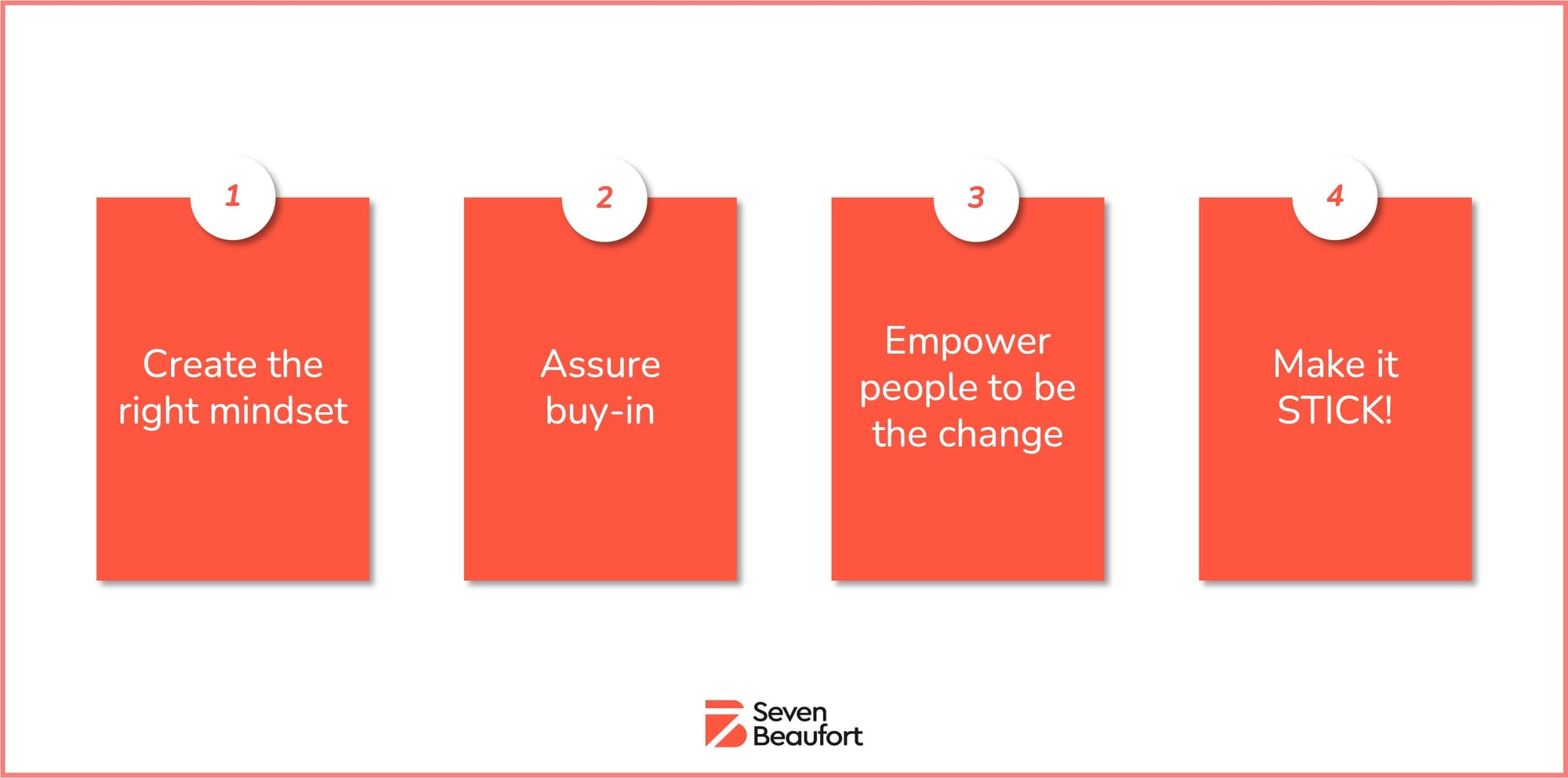After reading this article, you'll know more about:
- Why we prefer the terminology of “change empowerment”
- The ingredients to make sure employees drive and adopt changes
After reading this article, you'll know more about:

Source: Prosci
Change is a movement out of the current state through some kind of transition to ultimately reach the future state. In a world of continuous change, every company will be confronted with opportunities, challenges and disruptions. In their ambition of continuous improvement relating to cost or competitive advantages, changes can be envisaged on processes, organizational structure, way of working, new product launch, technology and so on. In all these changes, people are at the center of applying the tool, methods, and behaviors that drive an organization. Full business value of the change can only be realized through people’s adoption of the change.
Probably now the following question pops up in your mind: “How can I make sure that employees drive and adopt the changes that are currently happening within our company?”.
Well, this brings me to the terminology of “change management”. It’s all in the naming: “the management of change”. To drive your organizational success and to achieve your desired outcome, you must prepare, equip and support people to successfully drive and adopt the change. Thus, for us, “change empowerment” would cover this more. Now, how do we bring this into practice and effectively embed a change culture within your company?

In general, people don’t like change. Our brains interpret change as a threat. In other words, the human body and mind is protecting us from change which translates into resistance. To minimize the excessive feeling of fear, you should know what the impact on processes, tools, capabilities, roles, wage, etc. will be of this change on your employees. Take your time to explain them the WHY and adapt your way of communicating to your audience.
Questions to keep in mind: Why are we doing these changes? What’s the reason behind it? What’s the most appropriate way to communicate this message? Do they understand the WHY-message?
If you don’t involve your employees, the willingness to participate in the change will be inexistent. To ensure collaboration and eagerness to change, you have to explain what the change will mean for them. Make the change tangible for your audience, ensure it makes sense for each of them.
Questions to keep in mind: How will the lives of your employees alter by adopting the change? What impact will it have on each individual? What motivates and annoys them when they are performing their job?
So far, both best practices, are focusing on preparing your employees to successfully adopt the change. The last best practices will help you to equip and support in those uncertain times.
Adapting to and adopting change takes time. Not every individual will absorb this in the same timing frame neither. Emphasize the organization’s ambitions to become the change themselves and offer them freedom and support to bring themselves and their colleagues to the desired state. By empowering your front runners, they will be help you to identify the proper change management materials and support (training type, feedback demo sessions, how-to videos, champion check-in, feedback sessions) needed. Possibly change will also mean that people need to implement a different way of working. You can’t expect someone to perform other activities or to master knowledge overnight. They will need to live with the change. You need to give them time, ensure they have the necessary tools, training and are aware of what you expect from them in a timely manner (so not a day or a few days before go-live). Create training materials that are as visual as possible and assign a first point of contact they can reach out to in case of questions or issues.
Questions to keep in mind: What skill set do they need? What is the difference with the current way of working? How will training be provided to ensure business continuity? To whom can they reach out for support?
At the end, the ultimate goal is sustainable change which is not that obvious or easy to achieve. For example, it is possible that you don’t have enough resources to assign and monitor accountability or foresee enough recognition. To avoid people again acting upon what they know and are comfortable with, you should openly communicate about performance due to the change, set up frequent feedback sessions held by managers, and create a speak-up workplace culture. You only know if the change is adopted by your employees if you take a step back afterward and reflect if the change is incorporated in the employee’s job activities etc.
Questions to keep in mind: Did you develop plans to ensure the change becomes part of the culture? Who is responsible for making sure sustainment activities are done? How are you going to measure the adoption of change?
It’s human nature to return to old habits. If employees aren’t aware of the change and aren’t driving the change, eventually they won’t adopt the change. That’s why it’s great that you kept reading until the 4th piece to be fully equipped to start thinking of driving & embedding a change within your company.
You can foresee the fanciest tools, processes, and methods but your people will make the difference and they will need to make the change happen.
Good luck!

Aurélie Ghislain
Management Consultant at Seven Beaufort
Want to stay in the loop with our upcoming content?
Read a little more about us